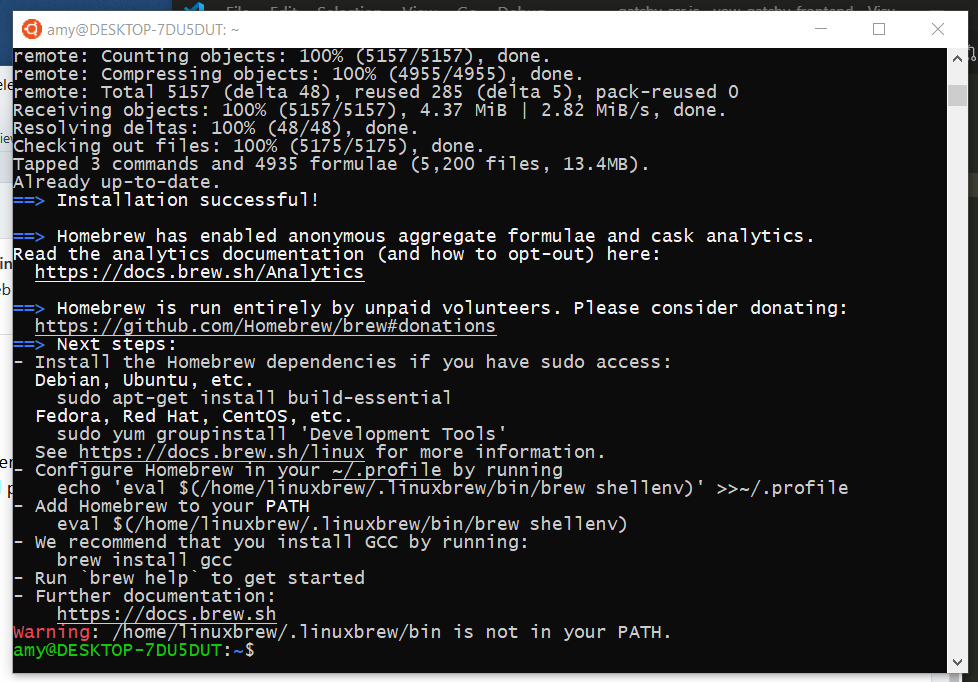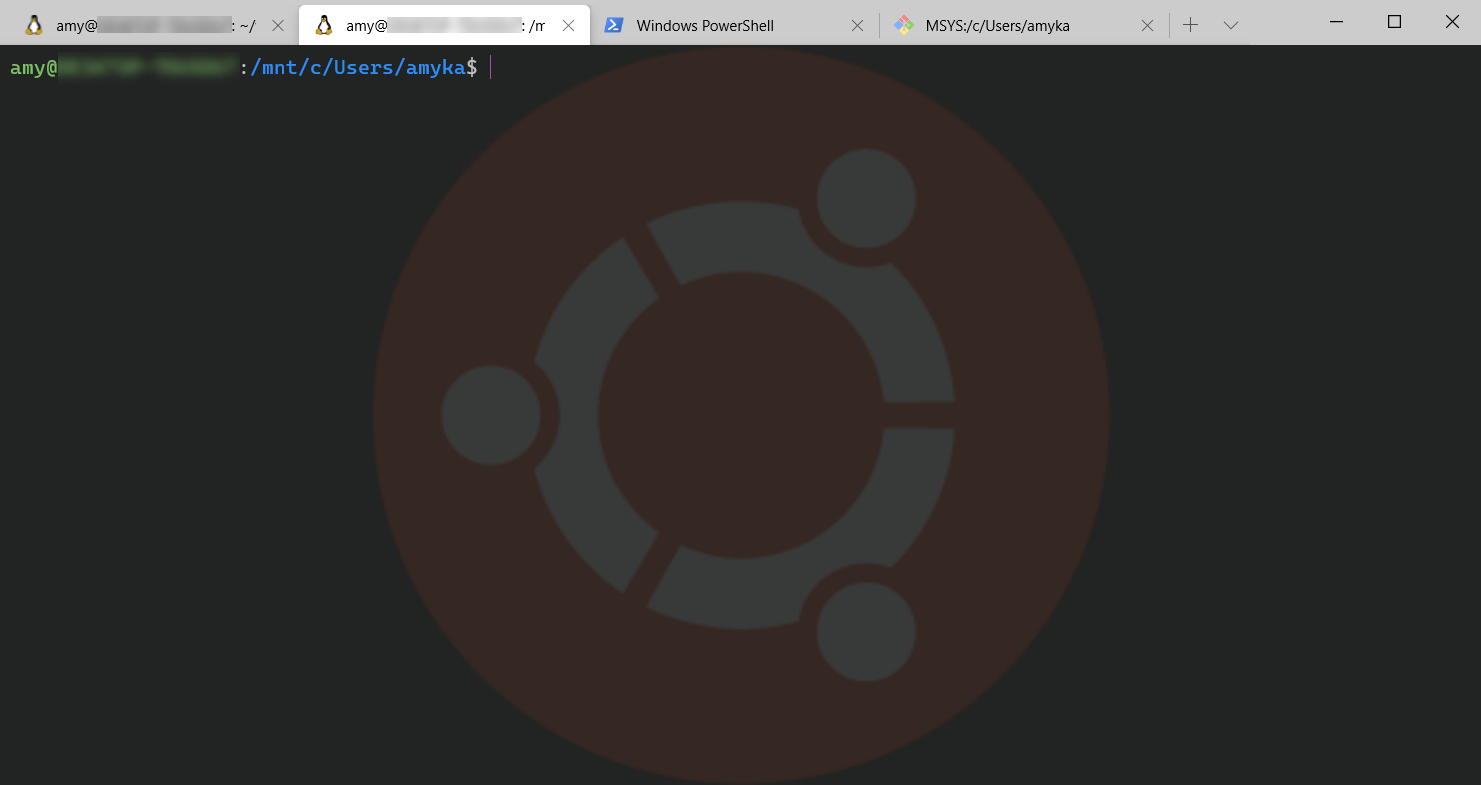Setting up a Windows Computer for Dev
In the past, Windows has developed a reputation for being a difficult OS to use as a developer. Things were difficult to install and run, involved complex workarounds and you could forget doing anything involving Ruby. Thankfully in recent years that’s improved, even more so with the Windows Subsystem for Linux (WSL) so it’s now possible to do pretty much everything you can on a unix system.
This is easiest when setting up a computer from scratch, but if it’s an existing computer most of this should work (I’ve had issues with installing Ruby on an existing install though).
You may not need to use all these programs, I use the following tools on a daily basis for various types of development:
WSL
The Windows Subsystem for Linux (WSL) gives the ability to run Linux bash on a Windows computer, and gives the ability to do pretty much everything you would normally do.
- Run the following command in Powershell as an Administrator
Enable-WindowsOptionalFeature -Online -FeatureName Microsoft-Windows-Subsystem-Linux
- Make sure you restart your computer once that’s done
- Install Ubuntu from the Microsoft Store. There are a few different versions so install what you like, but the unversioned one (
Ubuntu) will install the latest version - Open up the Ubuntu app and follow the instructions to set up your new user
WSL2
In June 2020, Microsoft released WSL2, which you can use instead of or alongside WSL, for information on upgrading to WSL2, check out the Microsoft docs.
HomeBrew
- Download and install HomeBrew by running the below command in WSL
sh -c "$(curl -fsSL https://raw.githubusercontent.com/Linuxbrew/install/master/install.sh)"
- It will print out steps for you to take, make sure you follow all of them for it to work.

sudo apt-get install build-essential
echo 'eval $(/home/linuxbrew/.linuxbrew/bin/brew shellenv)' >>~/.profile
eval $(/home/linuxbrew/.linuxbrew/bin/brew shellenv)
brew install gcc
Ruby
Ruby can be a bit tricky (but nowhere near as tricky as it used to be), and may require re-installing, so recommend you do this first when you can
sudo apt-get update -y && sudo apt-get upgrade -y
sudo apt-add-repository ppa:brightbox/ruby-ng
sudo apt-get update
sudo apt-get install ruby2.5 ruby2.5-dev build-essential dh-autoreconf
fnm
Similar to NVM (Node Version Manager), fnm is a node version manager that I had recommended to me as a better alternative
- Install fnm from the GitHub repo
curl https://raw.githubusercontent.com/Schniz/fnm/master/.ci/install.sh | bash
- Add the following to your
.bashrc(or similar) file to allow using fnm
## fnm
export PATH=/home/{your_username}/.fnm:$PATH
eval "`fnm env --multi`"
- Install the version of node that you want and tell nvm to use that, eg:
## Install the latest node version
fnm install latest
fnm use latest
## Or install a specific version
fnm install 12
fnm use 12
Yarn
You can install yarn either with Homebrew or via apt-get, it’s a little easier using Homebrew though as Ubuntu sometimes comes pre-installed with cmdtest which conflicts with yarn
Installing with Homebrew
- Run to install yarn
brew install yarn
Installing with apt-get
- Run
sudo apt remove cmdtest - Run to install yarn
curl -sS https://dl.yarnpkg.com/debian/pubkey.gpg | sudo apt-key add -
echo "deb https://dl.yarnpkg.com/debian/ stable main" | sudo tee /etc/apt/sources.list.d/yarn.list
sudo apt-get update && sudo apt-get install --no-install-recommends yarn
- Keep an eye on the install and make sure it’s not installing
cmdtest
Windows Terminal
No matter whether you use WSL, Git Bash, Command Prompt or Powershell, Windows Terminal is the one for you.
Install through the Windows App Store.

You can edit the settings to customise the terminals available, the default terminal, or to change the theme and background colours. For example, I have a background image set (with a fair bit of opacity so it’s not too bright), so at a glance I can see which terminal I’m in.
{
"$schema": "https://aka.ms/terminal-profiles-schema",
"defaultProfile": "{07b52e3e-de2c-5db4-bd2d-ba144ed6c273}",
"requestedTheme": "dark",
"profiles": {
"defaults": {
"fontFace": "Cascadia Code PL",
"fontSize": 14,
},
"list": [
{
"guid": "{00000000-0000-0000-ba54-000000000002}",
"commandline": "\"%PROGRAMFILES%\\git\\usr\\bin\\bash.exe\" -i -l",
"icon": "C:\\Program Files\\Git\\mingw64\\share\\git\\git-for-windows.ico",
"name": "Git Bash",
"startingDirectory": "%USERPROFILE%",
"backgroundImage": "C:\\Users\\amyka\\AppData\\Local\\Packages\\Microsoft.WindowsTerminal_8wekyb3d8bbwe\\LocalState\\git_bash.png",
"backgroundImageStretchMode": "uniform",
"backgroundImageOpacity": 0.1
},
{
"guid": "{07b52e3e-de2c-5db4-bd2d-ba144ed6c273}",
"hidden": false,
"name": "Ubuntu 20.04 LTS",
"source": "Windows.Terminal.Wsl",
"startingDirectory": "//wsl$/Ubuntu/home/amy",
"backgroundImage": "C:\\Users\\amyka\\AppData\\Local\\Packages\\Microsoft.WindowsTerminal_8wekyb3d8bbwe\\LocalState\\ubuntu.png",
"backgroundImageStretchMode": "uniform",
"backgroundImageOpacity": 0.1
}
]
}
}
Tunnelto
Tunnelto is a tool similar to ngrok that allows you to expose local servers to the internet. I had this pop on Twitter a while back and liked that the had the same functionality, but much more affordable to have custom subdomains and multiple servers running.
- Run the following commands to download and install Tunnelto (you may want to get the most recent version from their repository though) and make it accessible from the command line
sudo wget https://github.com/agrinman/tunnelto/releases/download/0.1.9/tunnelto-linux.tar.gz
tar xvzf tunnelto-linux-tar.gz
mv tunnelto /usr/local/bin/tunnelto
- Run the below command to set your auth token
tunnelto set-auth --key {insertyourkey}
- You can now start a tunnel specifying the localhost port and a subdomain (if you don’t have one, it’ll auto generate one for you)
tunnelto --subdomain amyskapers --port 8080